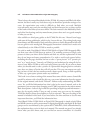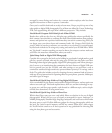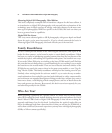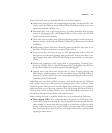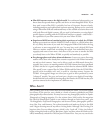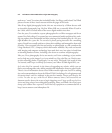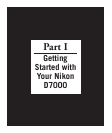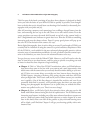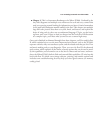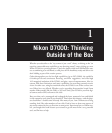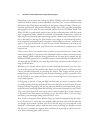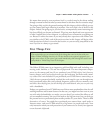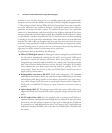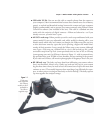David Busch’s Nikon D7000 Guide to Digital SLR Photography2
This first part of the book, consisting of just three short chapters, is designed to famil-
iarize you with the basics of your Nikon D7000 as quickly as possible, even though I
have no doubt that you’ve already been out shooting a few hundred (or thousand) pho-
tographs with your pride and joy.
After all, inserting a memory card, mounting a lens, stuffing a charged battery into the
base, and removing the lens cap to fire off a shot or two isn’t rocket science. Even the
rawest neophyte can rotate the mode dial (located at top left on the camera body) to
the P (Programmed auto) indicator or green Auto icon. Point the D7000 at something
interesting and press the shutter release. Presto! A pretty good picture will pop up on
the color LCD on the back of the camera. It’s easy!
But in digital photography, there is such a thing as too easy. If you bought a D7000, you
certainly had no intention of using the camera as a point-and-shoot snapshooter. After
all, the D7000 is a tool suitable for the most advanced photographic pursuits, with an
extensive array of customization possibilities. As such, you don’t want the camera’s oper-
ation to be brainless; you want access to the advanced features to be easy.
You get that easy access with the Nikon D7000. However, you’ll still need to take the
time to learn how to use these features, and I’m going to provide everything you need
to know in these first three chapters to begin shooting:
■ Chapter 1: This is a “Meet Your D7000” introduction, where you’ll find informa-
tion about what came in the box with your camera and, more importantly, what
didn’t come with the camera that you seriously should consider adding to your arse-
nal. I’ll also cover some things you might not have known about charging the
D7000’s battery, choosing a memory card, setting the time and date, and a few
other pre-flight tasks. This is basic stuff, and if you’re a Nikon veteran, you can skim
over it quickly. A lot of this first chapter is intended for newbies, and even if you
personally don’t find it essential, you’ll probably agree that there was some point
during your photographic development (so to speak) that you wished this infor-
mation was spelled out for you. There’s no extra charge!
■ Chapter 2: Here, you’ll find a Quick Start aimed at those who may not be old
hands with Nikon cameras having this level of sophistication. The D7000 has some
interesting new features, including one of the most advanced autofocus systems ever
seen in a mid-level camera body (and which deserves an entire chapter of its own
later in this book). But even with all the goodies to play with and learning curve
still to climb, you’ll find that Chapter 2 will get you shooting quickly with a min-
imum of fuss.



